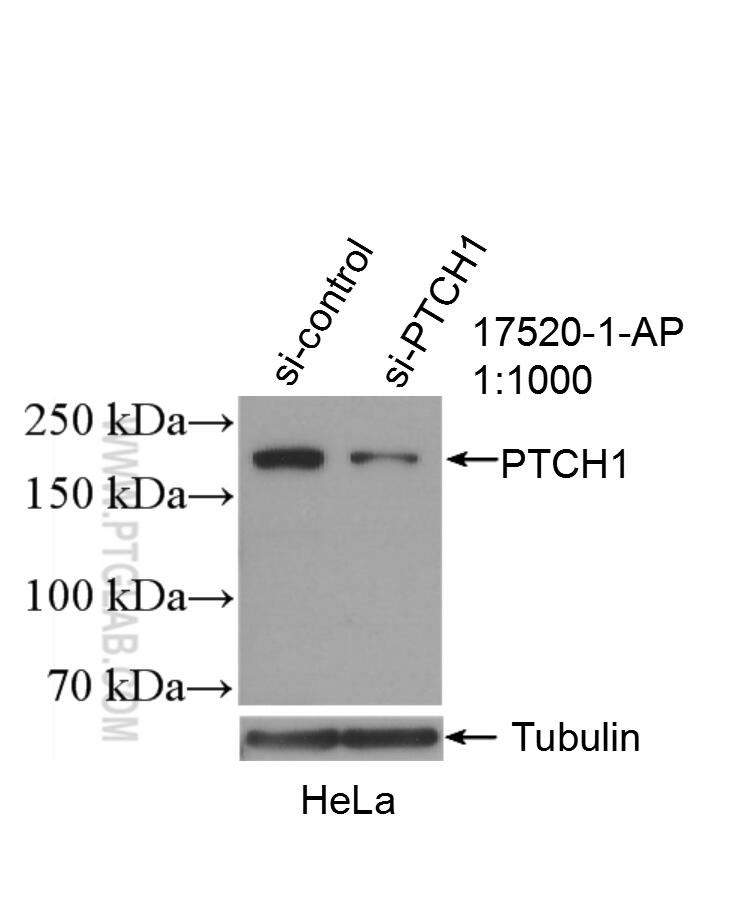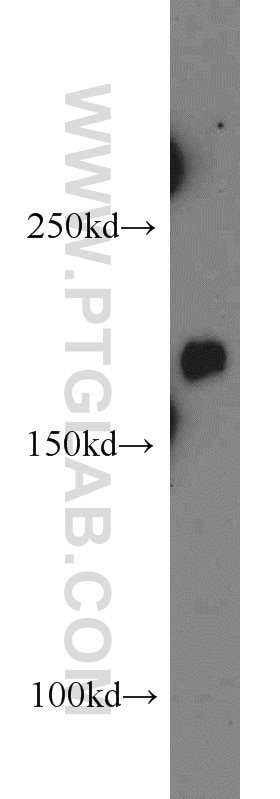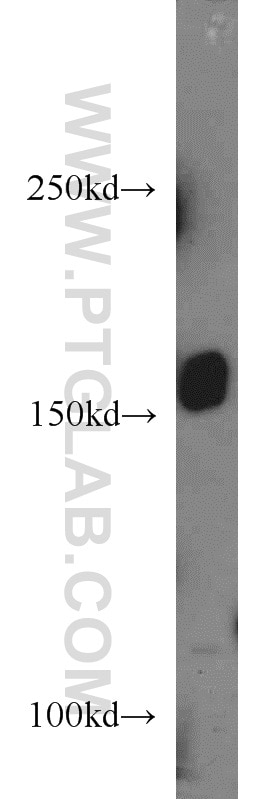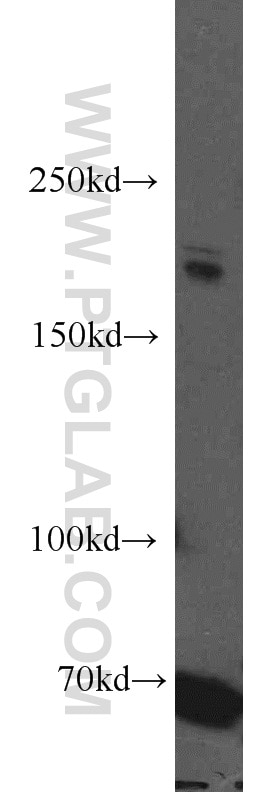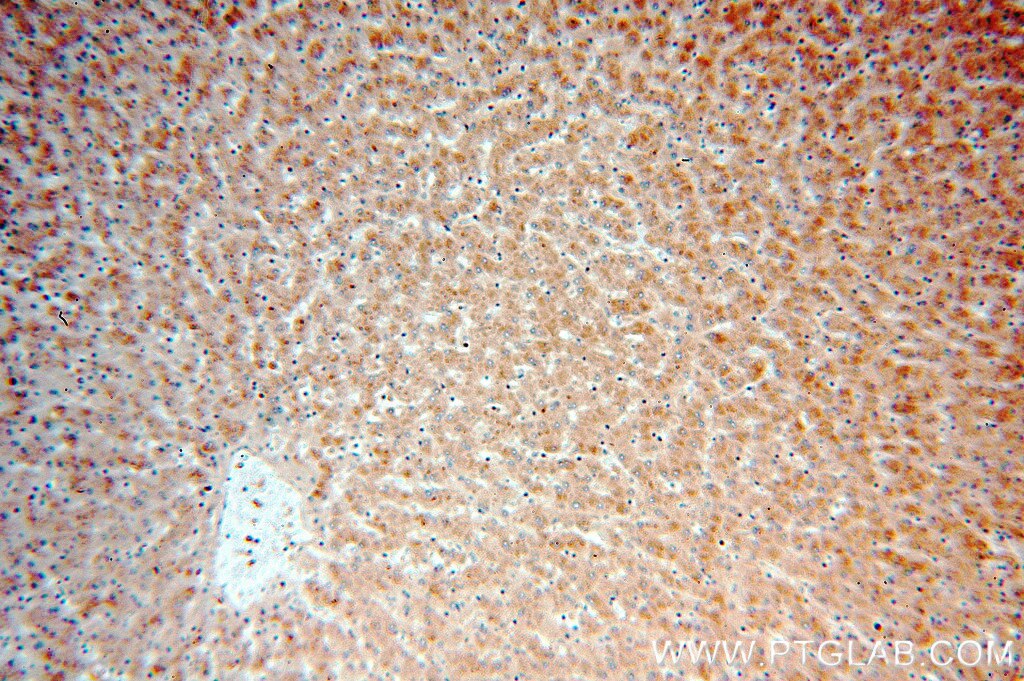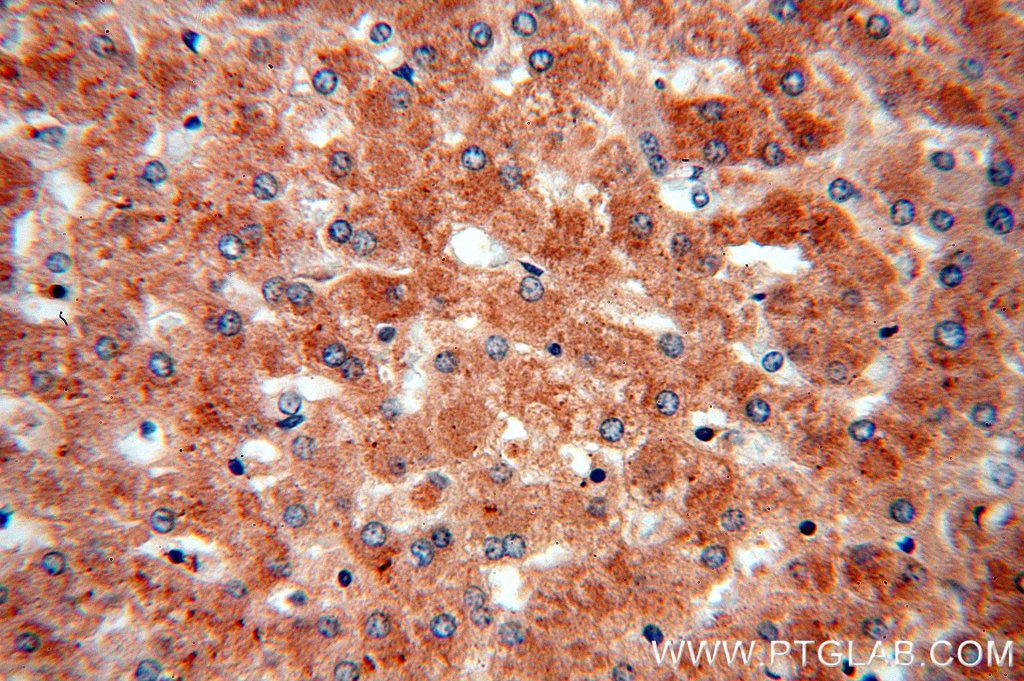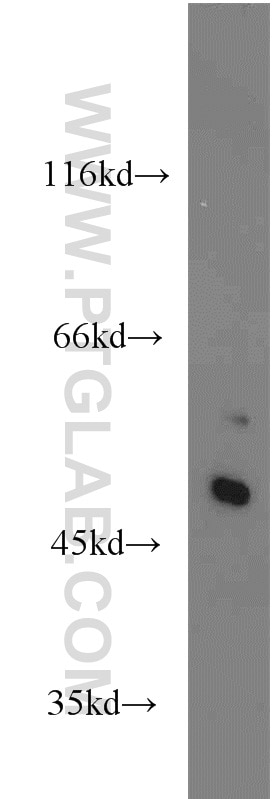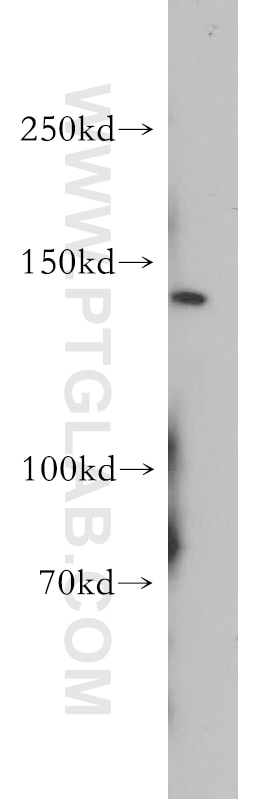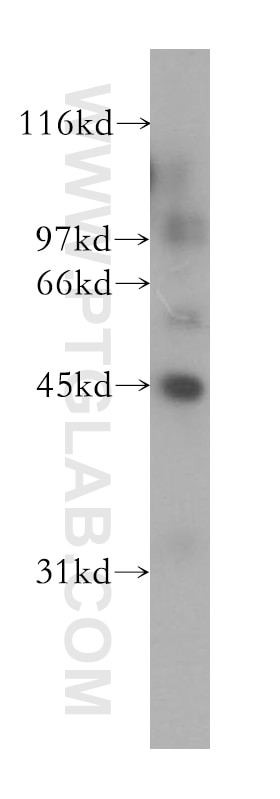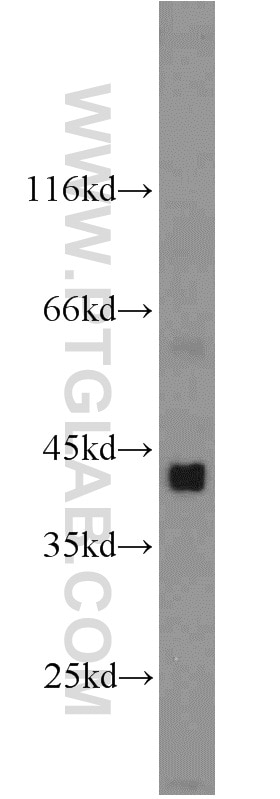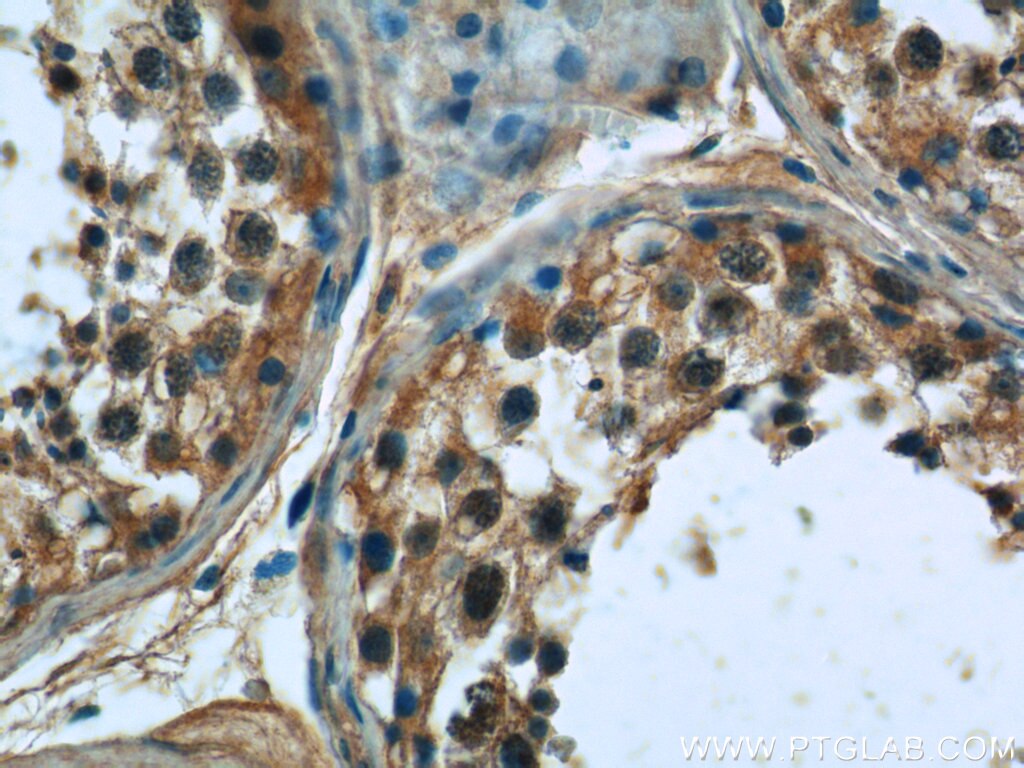- Featured Product
- KD/KO Validated
PTCH1 Polyklonaler Antikörper
PTCH1 Polyklonal Antikörper für IHC, WB,ELISA
Wirt / Isotyp
Kaninchen / IgG
Getestete Reaktivität
human, Maus und mehr (1)
Anwendung
WB, IHC, IF, ELISA
Konjugation
Unkonjugiert
Kat-Nr. : 17520-1-AP
Synonyme
Galerie der Validierungsdaten
Geprüfte Anwendungen
| Erfolgreiche Detektion in WB | Maushirngewebe, A431-Zellen, HeLa-Zellen |
| Erfolgreiche Detektion in IHC | humanes Lebergewebe Hinweis: Antigendemaskierung mit TE-Puffer pH 9,0 empfohlen. (*) Wahlweise kann die Antigendemaskierung auch mit Citratpuffer pH 6,0 erfolgen. |
Empfohlene Verdünnung
| Anwendung | Verdünnung |
|---|---|
| Western Blot (WB) | WB : 1:500-1:1000 |
| Immunhistochemie (IHC) | IHC : 1:50-1:200 |
| It is recommended that this reagent should be titrated in each testing system to obtain optimal results. | |
| Sample-dependent, check data in validation data gallery | |
Veröffentlichte Anwendungen
| WB | See 21 publications below |
| IHC | See 4 publications below |
| IF | See 1 publications below |
Produktinformation
17520-1-AP bindet in WB, IHC, IF, ELISA PTCH1 und zeigt Reaktivität mit human, Maus
| Getestete Reaktivität | human, Maus |
| In Publikationen genannte Reaktivität | human, Maus, Ratte |
| Wirt / Isotyp | Kaninchen / IgG |
| Klonalität | Polyklonal |
| Typ | Antikörper |
| Immunogen | Peptid |
| Vollständiger Name | patched homolog 1 (Drosophila) |
| Berechnetes Molekulargewicht | 161 kDa |
| Beobachtetes Molekulargewicht | 161 kDa |
| GenBank-Zugangsnummer | NM_000264 |
| Gene symbol | PTCH1 |
| Gene ID (NCBI) | 5727 |
| Konjugation | Unkonjugiert |
| Form | Liquid |
| Reinigungsmethode | Antigen-Affinitätsreinigung |
| Lagerungspuffer | PBS mit 0.02% Natriumazid und 50% Glycerin pH 7.3. |
| Lagerungsbedingungen | Bei -20°C lagern. Nach dem Versand ein Jahr lang stabil Aliquotieren ist bei -20oC Lagerung nicht notwendig. 20ul Größen enthalten 0,1% BSA. |
Hintergrundinformationen
PTCH1 (patched homolog 1) is a twelve-pass transmembrane protein that acts as a receptor of Hedgehog signaling pathway (PMID: 8906794). Hedgehog pathway plays a critical role in embryonic development and tissue homeostasis, and its dysregulation has been implicated in many human diseases including congenital disorder and cancer (PMID: 23719536; 23532857). In the absence of Hedgehog proteins (SHH, IHH and DHH in humans), PTCH1 represses the activity of Smoothened (SMO). Binding of Hedgehog proteins to PTCH1 inhibits the repression of SMO, resulting in the activation of downstream targets through the Gli transcriptional effectors (PMID: 23719536; 17139287). The gene of PTCH1 is considered to be a tumor suppressor gene. Mutations of this gene have been associated with basal cell nevus syndrome, esophageal squamous cell carcinoma, trichoepitheliomas, transitional cell carcinomas of the bladder, as well as holoprosencephaly.
Protokolle
| Produktspezifische Protokolle | |
|---|---|
| WB protocol for PTCH1 antibody 17520-1-AP | Protokoll herunterladen |
| IHC protocol for PTCH1 antibody 17520-1-AP | Protokoll herunterladen |
| Standard-Protokolle | |
|---|---|
| Klicken Sie hier, um unsere Standardprotokolle anzuzeigen |
Publikationen
| Species | Application | Title |
|---|---|---|
Nat Commun TSPAN8 promotes cancer cell stemness via activation of sonic Hedgehog signaling. | ||
Nat Commun mTORC1 regulates PTHrP to coordinate chondrocyte growth, proliferation and differentiation. | ||
Am J Hum Genet Genomic analyses reveal mutational signatures and frequently altered genes in esophageal squamous cell carcinoma. | ||
Elife Activation of Hedgehog signaling in mesenchymal stem cells induces cartilage and bone tumor formation via Wnt/β-Catenin. | ||
J Mol Cell Biol Sequential stabilization of RNF220 by RLIM and ZC4H2 during cerebellum development and Shh-group medulloblastoma progression. | ||
Cancers (Basel) RNA-seq and ChIP-seq Identification of Unique and Overlapping Targets of GLI Transcription Factors in Melanoma Cell Lines |
Rezensionen
The reviews below have been submitted by verified Proteintech customers who received an incentive forproviding their feedback.
FH Charlotte (Verified Customer) (07-27-2022) | 1/2 : WT starved and then ShhN stimulated. 3/4 : Ptch1 KO cells starved and then ShhN stimulated. It should be between the uppermost band and the following one from the ladder but we can conclude that there is nothing and the antibody is really dirty
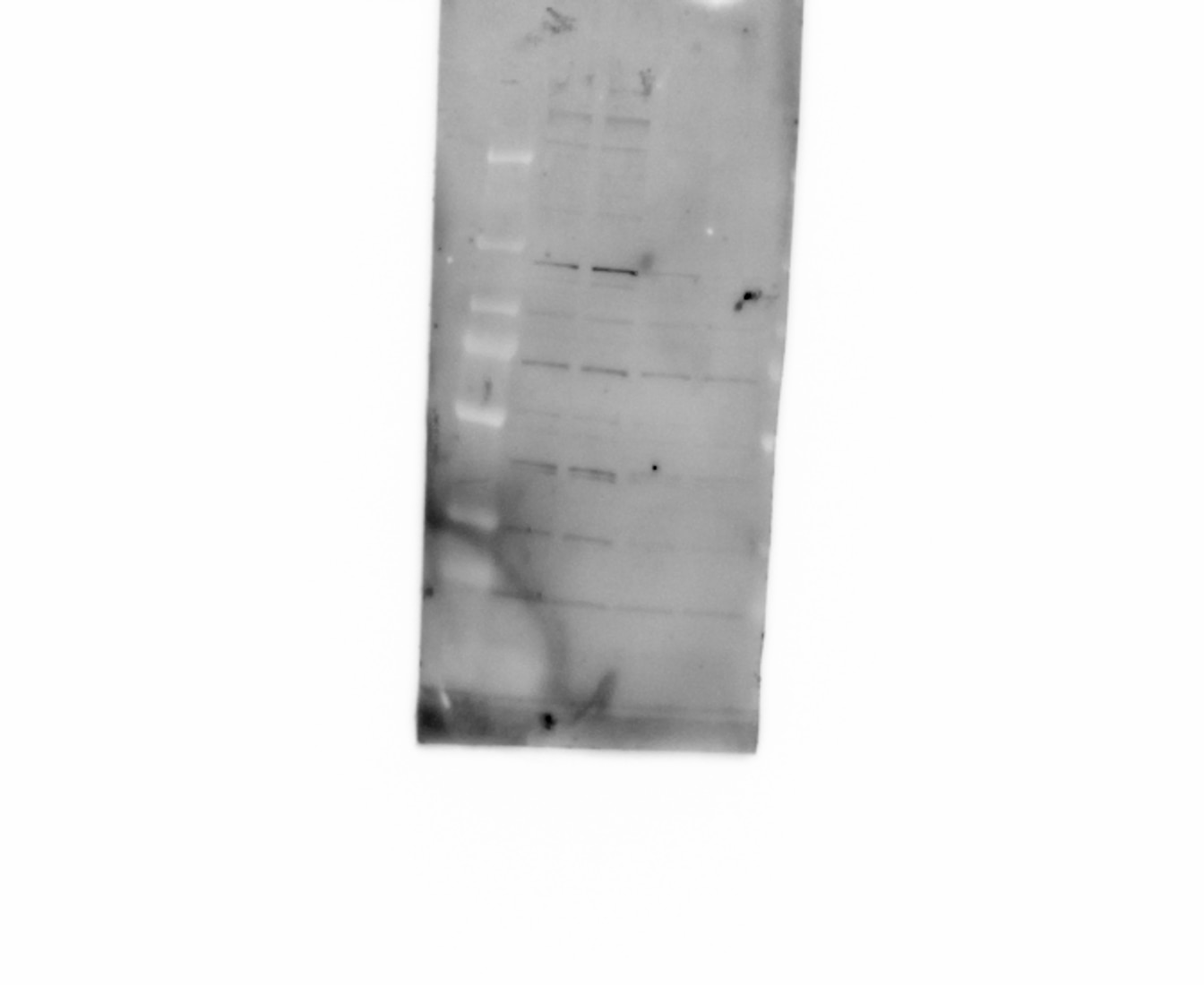 |
FH Boyan (Verified Customer) (04-04-2019) | The band at around 200 KD is not the true band of Ptc1, because this band cannot be increased by treating the cells with Shh ligand, and did not disappear in Ptc1 KO cells. As positive controls, Gli1 was induced by treating the cells with the Shh ligand.
|
FH Juan Pablo (Verified Customer) (11-29-2018) | I see a band around 200kDa kind of clean. Never detected the 149kDa shown in proteintech website.
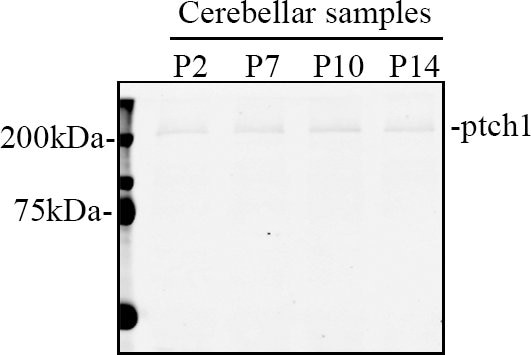 |
